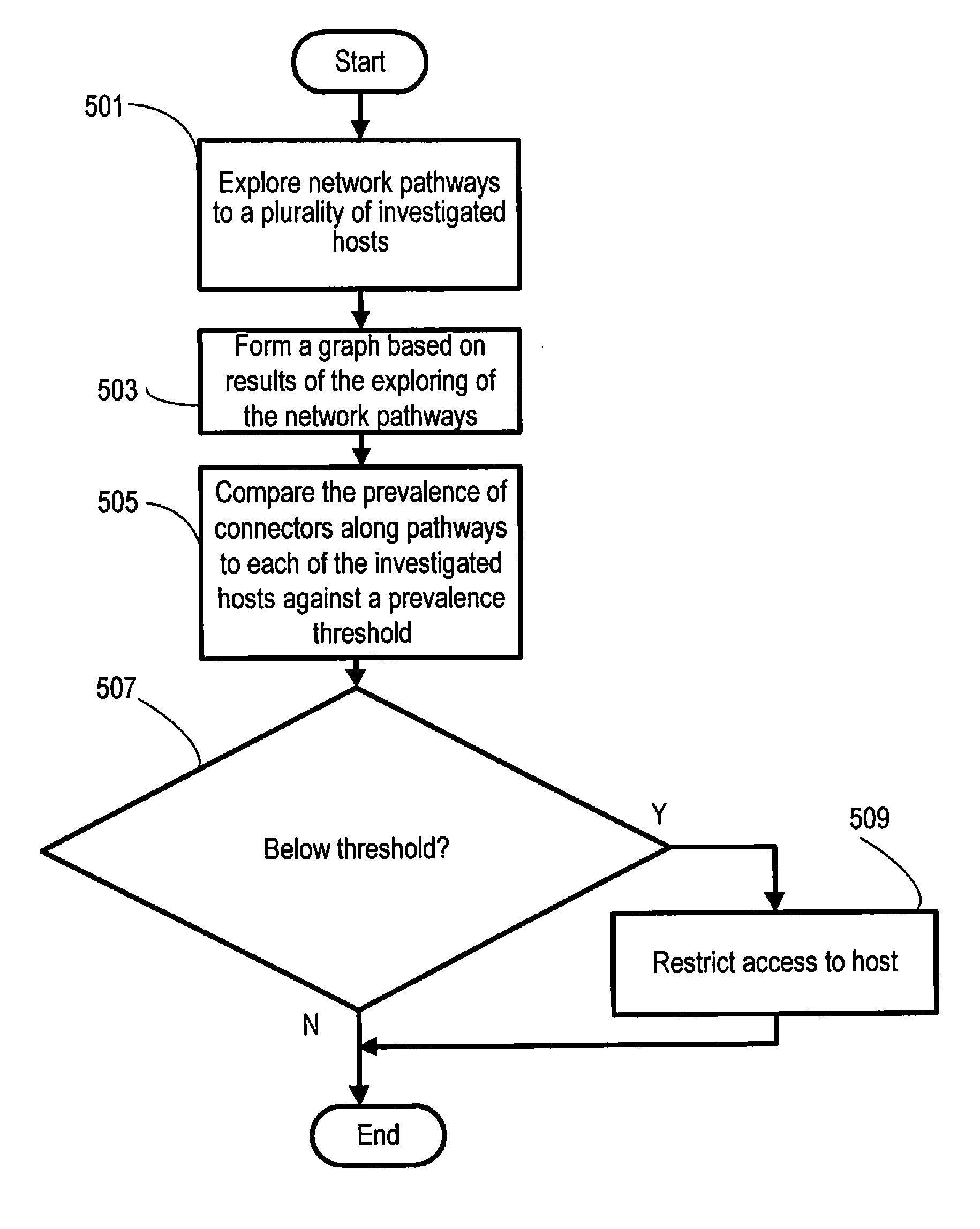System and method for restricting pathways to harmful hosts in computer networks
a technology of computer networks and pathways, applied in the field of information processing and security, can solve problems such as blocking outright suspicious hosts, and achieve the effect of disseminating malicious conten
- Summary
- Abstract
- Description
- Claims
- Application Information
AI Technical Summary
Benefits of technology
Problems solved by technology
Method used
Image
Examples
Embodiment Construction
[0031]Aspects of the present invention are directed to technologies for detecting computer network intermediary hosts, through which trusted hosts are accessed. If deemed appropriate for the sake of increasing safety of a protected user, computer system, or subnet, according to various embodiments, the intermediary hosts are restricted, e.g., blocked, from being accessed. This is achieved according to certain embodiments by examining the links between network hosts, building a graph of links between network hosts, and automatically analyzing the changes in the links between the hosts, with detection and restriction of the intermediary host's address.
[0032]Computer systems controlled by an offender are a system of computer networks, computers, subsystems, objects and tools that have been compromised by an offender and put to malicious use by the offender. In the present context, this term includes primarily a set of servers and other hosts which have a network interface and are used ...
PUM
 Login to View More
Login to View More Abstract
Description
Claims
Application Information
 Login to View More
Login to View More - R&D
- Intellectual Property
- Life Sciences
- Materials
- Tech Scout
- Unparalleled Data Quality
- Higher Quality Content
- 60% Fewer Hallucinations
Browse by: Latest US Patents, China's latest patents, Technical Efficacy Thesaurus, Application Domain, Technology Topic, Popular Technical Reports.
© 2025 PatSnap. All rights reserved.Legal|Privacy policy|Modern Slavery Act Transparency Statement|Sitemap|About US| Contact US: help@patsnap.com



